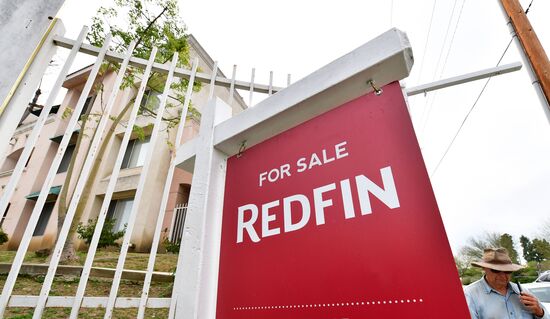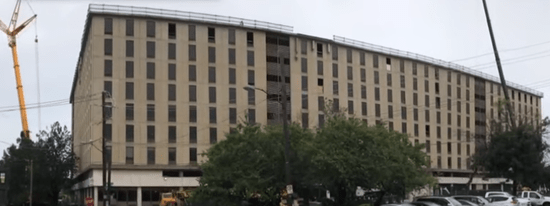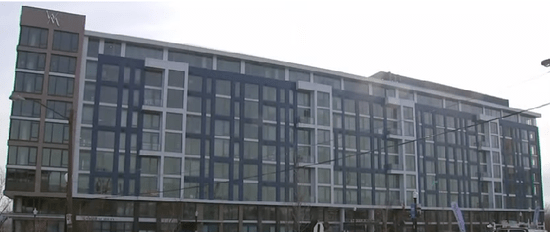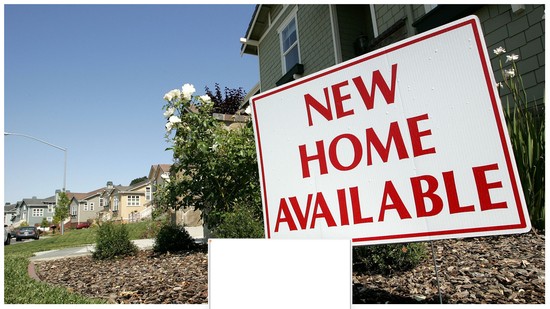I acquired some disturbing info when two shut relations instructed me who they have been supporting within the upcoming election. It isn’t Donald Trump, however it’s nearly as unhealthy: Robert F. Kennedy Jr. This was upsetting, since he isn’t solely an anti-vaxxer spreading lethal disinformation, however is such a conspiracy theorist that his complete marketing campaign was awarded Politifact’s 2023 Lie of the Yr.
But my relations’ help had nothing to do together with his stance on vaccines, his racism, or his different nonsense; they favored him as a result of they’re younger, having hassle shopping for a home, and Kennedy has made {that a} high difficulty. Neither Trump nor Biden ever appear to debate housing affordability, however one among RFK’s speeches this previous October in Los Angeles did, and it went viral.
RELATED STORY: RFK Jr.’s apology over controversial $7M Tremendous Bowl advert does not move sincerity take a look at
He blamed the housing disaster on large companies attempting to personal a lot of the single-family houses by 2030 to allow them to flip them into leases. Kennedy ranted, “They will outbid your kids!” Though one of many companies he named appears to be a part of the newest right-wing conspiracy, Kennedy wasn’t far off the mark for as soon as.
Based on MetLife Funding Administration, institutional traders will possible management 40% of U.S. single-family rental houses by 2030. Final yr, I wrote about Wall Road shopping for up houses hoping our leaders would take extra of an curiosity. It really does seem that the billionaire class actually needs to assert the final remaining space the center class has left to construct wealth.
With Wall Road landlords shopping for up lots of of hundreds of houses to show into leases, together with the pandemic driving the prices of constructing provides by way of the roof, and local weather change taking out stock, we’re in what’s described because the worst market for house patrons in American historical past.
What my family members like is that Kennedy promised, if elected, he had a plan to lock house loans at 3% curiosity for first-time homebuyers, decreasing mortgage funds by $1,000 a month by “tax-free bonds on the open market.” They aren’t the one ones who favored this, apparently. One month after that speech went viral, Self-importance Honest wrote as an actual headline {that a} “A Batshit Variety of Younger Swing State Voters Assume RFK Jr. Ought to Be President,” the place he was proven beating each Biden and Trump amongst under-45 voters within the main battleground states.
Present polls present him rating very excessive in favorability scores amongst the 18-44 crowd, whereas his highest unfavorability comes from these over 65. His most popular technique of speaking has been on social media and podcasts, and he has made lots of of speeches on faculty campuses speaking about his housing plan:
“A month in the past, a child in New Hampshire instructed me that each Tuesday he has to choose about having a meal or filling his automotive with gasoline, and he stated that I am the one one speaking about how he can sometime personal his personal home.”
Kennedy stated his plan for housing features a assured 3 % mortgage charge for first-time patrons that he’ll finance with tax-free Treasury payments.
“When you have a wealthy uncle who will co-sign your mortgage, you will get a greater charge. I will give a complete era a wealthy uncle, and his identify is Uncle Sam,” he instructed Newsweek. “All over the place I’m going, I speak about my housing plan, and that appeals to the youthful era.”
A nationwide ballot performed by the Alternative Begins at Residence marketing campaign confirmed {that a} staggering 85% of Individuals, no matter political celebration, are united in acknowledging that making certain protected, first rate, and reasonably priced housing needs to be thought-about “a high nationwide precedence.”
The survey revealed deep issues over the escalating housing prices, with 60% of respondents figuring out housing affordability as probably the most important difficulty of their locality. Though the ballot was taken again in 2019, it’s backed up by an identical, more moderen examine by Pew Analysis final yr:
“Individuals’ issues in regards to the availability of reasonably priced housing have outpaced worries about different native points.”
Housing costs have solely gone up the previous few years, and for those who do have a home, the sacrifices wanted to fulfill housing bills are obscene. The Alternative Begins survey confirmed that 61% reported having to forgo important wants, from chopping again on well being care to extra job undertakings. This burden is notably pronounced amongst youthful demographics, African Individuals, Hispanics, and renters. Nonetheless, 90% of the respondents consider elected officers aren’t doing sufficient.
Congress is beneath great stress to behave, however hasn’t been in a position to do a lot over partisan disagreements on learn how to tackle the difficulty. To Biden’s credit score, he hasn’t ignored the difficulty. He unveiled the Housing Provide Motion Plan in 2022, aiming to shut the housing provide shortfall. Nonetheless, progress has been minimal. Greater rates of interest have additional slowed building, overshadowing the administration’s efforts.

This previous yr, Biden threw his help behind two key payments to deal with the housing affordability disaster. The Reasonably priced Housing Credit score Enchancment Act, designed to restrict rents to lower than 24% of the median revenue within the native space, goals to increase reasonably priced housing entry to a further 1.2 million households over the subsequent decade.
Moreover, outlined in his 2023 finances, the Neighborhood Properties Funding Act endeavors to advertise homeownership for an additional 500,000 households whereas concurrently rising investments in neighborhood revitalization initiatives.
And whereas Biden proposed grants for communities loosening zoning guidelines, the precise implementation stays restricted as a result of useful resource constraints and native authorities resistance. Specialists have emphasised that zoning legal guidelines are proscribing new building and contributing considerably to housing shortage. As Vox reported this yr:
A high offender for this shortage is native zoning legal guidelines that bar new building and empower owners who achieve financially from proscribing housing provide to resolve whether or not or to not make room for extra neighbors.
It’s unlawful to construct flats on greater than 70 % of residential land in nearly each main US metropolis. Different regulatory boundaries, like minimal parking necessities, minimal lot sizes, and peak limits, additionally make it more durable to suit extra folks onto the out there land. The favored shorthand for these restrictions is NIMBYism — quick for “not in my yard.”
Most cities haven’t accomplished a lot to ease authorities rules and loosen zoning necessities, though there have been exceptions, like Nashville, Tennessee. And though Biden’s plan acknowledged the zoning difficulty, extra must be accomplished to deal with regulatory boundaries. Proposed federal funding to incentivize zoning reforms, sadly, acquired considerably much less allocation than initially requested, hindering substantial progress on this space.
Biden also needs to comply with the lead of lawmakers, notably Rep. Ro Khanna of California, who’ve urged for regulatory measures to curtail personal fairness’s position in shopping for up single-family houses. He, together with Katie Porter, additionally of California, are the sponsors of the Cease Wall Road Landlords Act, which might cease lease gouging by ending the position of institutional traders within the single-family residential market.

But one of the crucial progressive proposals that has emerged has been to rework vacant workplaces into reasonably priced housing.
There will probably be 1 billion sq. toes of vacant workplace area by the top of the last decade. Presently, in San Francisco alone, which is among the highest housing markets within the U.S., there may be at the moment 27.1 million sq. toes of empty workplace area.
Contemplating the continuing housing affordability disaster, the prospect of repurposing vacant workplaces for residential use seems fairly pure. In truth, a legislative proposal, generally known as the Revitalizing Downtowns Act, was launched in Congress in 2021, however appears to have died in committee.

The invoice aimed to ascertain a 20% annual tax credit score to offset roughly one-fifth of the bills related to changing workplace buildings into residential or mixed-use properties. Notably, residential conversions could be mandated to incorporate reasonably priced housing parts. Biden can and may get behind this and promise to work with a brand new Congress to make it occur.
The sponsor, Democrat Debbie Stabenow of Michigan, emphasised, “As our workplaces change due to the COVID-19 disaster, we are going to see extra unused buildings in our downtowns. Changing these buildings to residential and mixed-use properties will profit households and our cities.”
Regardless of near-unanimous acknowledgment of the potential, there’s been a lot resistance, primarily from builders. They will cost increased lease for workplace area, and lots of consider that firms will finally power folks away from distant work due to the false delusion of the “magical workplace.” They do have some legitimate arguments regarding zoning rules, and even architectural constraints. It may be very tough to transform workplace buildings to residential, particularly the newer workplace buildings.
The Washington Publish did an interactive graphic on the challenges. Newer buildings solely have home windows across the perimeter they usually lack the mandatory plumbing and electrical infrastructure that houses demand. The ceilings have to be of ample peak to forestall these additions from falling under the usual regulation peak, usually set at a minimal of seven toes. Nonetheless, all of those points may be addressed.
California’s SB 6 supplied a blueprint. It allowed for residential growth on industrial land with out rezoning, providing hope for different areas grappling with housing shortages. The invoice unlocks huge housing potential and generates substantial advantages for communities.

City Footprint, an organization specializing in city planning software program, performed a current evaluation suggesting that the invoice would “enhance market-feasible capability by as a lot as 2 million new houses whereas producing substantial fiscal advantages to cities.”
When the invoice handed in 2022, Gov. Gavin Newsom jump-started the method by saying $1 billion in awards, creating hundreds of latest houses (and lots of new building jobs) for Californians.
Biden has a State of the Union speech developing on March 7, which will probably be his final earlier than the election. He fully ignored housing affordability final yr, however he can’t afford to take action this yr.
Let Trump rant about his vendettas and partitions—Biden must again legislative initiatives that curb Wall Road gougers and incentivize housing conversions at a a lot bigger scale. California’s strides are commendable, however broader help and federal-level measures are essential for a nationwide impression.
The transformation of empty workplaces into houses holds great promise in resolving the reasonably priced housing disaster. By addressing zoning rules, architectural challenges, and leveraging legislative initiatives, it may well pave the way in which for a extra equitable and inclusive housing panorama, making certain that each American has entry to a protected and reasonably priced place to name house.
And possibly, simply possibly, I can persuade my silly family members to not throw away their vote.
RELATED STORY: How Wall Road is killing the center class dream of proudly owning a house
Marketing campaign Motion
